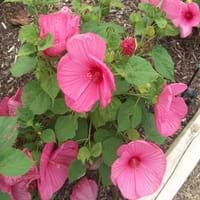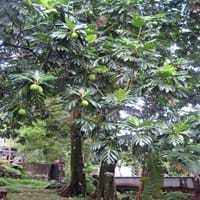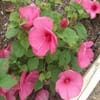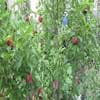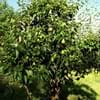Life Span
Annual and Perennial
Perennial
Type
Broadleaf Evergreen
Fruit
Origin
Not Available
Southeastern Asia, Melanesia, Micronesia
Types
Hibiscus Luna Pink Swirl
Hibiscus Luna Red
Hibiscus Luna White
Jackfruit, Breadnut, Figs
Number of Varieties
Not Available
Habitat
gardens, Grassland, Homesteads, Subtropical climates, tropical environments
Lowland evergreen rainforest, Riverine swamp forest
USDA Hardiness Zone
9-15
10-15
AHS Heat Zone
Not Available
12-9
Habit
Oval or Rounded
Oval or Rounded
Flower Color
Light Pink, Pink, White
Yellow green
Flower Color Modifier
Bicolor
Bicolor
Fruit Color
Non Fruiting Plant, Peach, White, Yellow
Yellow, Green, Yellow green, Brown
Leaf Color in Spring
Dark Green
Dark Green
Leaf Color in Summer
Dark Green
Dark Green
Leaf Color in Fall
Dark Green
Dark Green
Leaf Color in Winter
Dark Green
Light Green
Leaf Shape
Ovate
Irregular
Plant Season
Spring, Summer, Fall, Winter
Spring, Summer, Fall, Winter
Sunlight
Full Sun, Partial Sun
Full Sun, Partial Sun
Type of Soil
Loam
Loam, Sand
The pH of Soil
Neutral
Acidic, Neutral, Alkaline
Soil Drainage
Well drained
Average
Bloom Time
Early Summer, Summer, Late Summer, Early Fall, Fall, Indeterminate
Indeterminate
Tolerances
Drought, Variety of soil types
Drought
Where to Plant?
Ground, Pot
Ground
How to Plant?
Stem Cutting, Tip cutting, Vegetative Reproduction
Grafting, Rooted stem cutting, Seedlings
Plant Maintenance
Medium
Medium
Watering Requirements
It cannot sustain wet-feet, Keep the Soil well drained, Requires watering in the growing season, Water Deeply, Water frequently while growing, Water more in summer, Water when soil is dry
Average Water Needs, Never Over-water, occasional watering once established, Water daily during growing season, Water Deeply
In Summer
Lots of watering
Lots of watering
In Spring
Moderate
Moderate
In Winter
Average Water
Average Water
Soil pH
Neutral
Acidic, Neutral, Alkaline
Soil Type
Loam
Loam, Sand
Soil Drainage Capacity
Well drained
Average
Sun Exposure
Full Sun, Partial Sun
Full Sun, Partial Sun
Pruning
A hard prune may be necessary if the plant becomes woody, Cut leaves after fall, Cut or pinch the stems, Pinch or prune as they grow to promote branching and bushiness, Prune for shortening long shoots, Prune in early summer, Remove deadheads
Prune every year, Prune if you want to improve plant shape, Remove branches, Remove damaged leaves, Remove dead branches, Remove dead leaves, Remove dead or diseased plant parts
Fertilizers
Apply 10-10-10 amount, Balanced liquid fertilizer, Do not fertilize new plants until at least a month, Use a low phosphate fertilizer to improve the quality of the blooms
20-20-20 amount, All-Purpose Liquid Fertilizer
Pests and Diseases
Aphids, Mealybugs, Red spider mite, Scale, Thripes, Whiteflies
Red blotch
Plant Tolerance
Drought, Variety of soil types
Drought
Flower Petal Number
Single
Not Available
Foliage Texture
Medium
Coarse
Foliage Sheen
Glossy
Glossy
Attracts
Bees, Butterflies, Hummingbirds
Birds, Not Available
Allergy
no allergic reactions
allergic reaction
Aesthetic Uses
Beautification, Borders, Landscape Designing
Not Used For Aesthetic Purpose
Beauty Benefits
Hair Conditioner, Not Available, Prevents greying of hair, Prevents Premature Baldness, Promotes Healthy Hair, Promotes healthy skin, Speed hair growth
Good for skin, Promotes Healthy Hair, Removes dandruff, Speed hair growth
Environmental Uses
Air purification
Air purification, Nesting sites for birds, Shadow Tree, Wildlife
Medicinal Uses
anti-inflammatory, Diuretic, Hair Loss, High blood pressure, Vitamin C
Cancer, cholesterol-lowering, Heart problems, High cholestrol, Immunity, Skin Disorders, Weight loss
Part of Plant Used
Flowers, Leaf Stalks, Leaves
Fruits
Other Uses
Culinary use, Employed in herbal medicine, Jam, Jelly, Making Shampoo, Oil is used for aromatherapy, Oil is used in perfume, soaps, creams, etc., Showy Purposes, Traditional medicine, Use in Chinese herbology, Used As Food, Used as Ornamental plant, Used for bedding in gardens, Used for fragrance, Used for its medicinal properties, Used in making beverages, Used in paper industry, Used in salads, Used to make hair tonic
Used As Food, Used for its medicinal properties
Used As Indoor Plant
No
No
Used As Outdoor Plant
Yes
Yes
Garden Design
Container, Foundation, Houseplant, Mixed Border, Tropical
Edible, Feature Plant, Fruit / Fruit Tree, Shade Trees, Tropical
Botanical Name
Hibiscus moscheutos
ARTOCARPUS altilis
Common Name
Luna Rose, Common Rose Mallow, Common Swamp Mallow
Breadfruit
In Hindi
हिबिस्कुस लूना गुलाब
Breadfruit Tree
In German
Hibiscus Luna Rose
Brotfruchtbaum
In French
Hibiscus Luna Rose
Breadfruit Arbre
In Spanish
Hibiscus Luna Rose
árbol del pan
In Greek
Hibiscus Luna Rose
αρτόδεντρο Δέντρο
In Portuguese
Hibiscus Luna Rose
Árvore de fruta-pão
In Polish
Hibiscus Luna Rose
Breadfruit drzewo
In Latin
Hibiscus rosa Luna
Arum
Phylum
Magnoliophyta
Magnoliophyta
Class
Magnoliopsida
Magnoliopsida
Family
Malvaceae
Moraceae
Genus
Hibiscus
Artocarpus
Clade
Angiosperms, Eudicots, Rosids
Angiosperms, Eudicots, Rosids
Tribe
Hibisceae
Artocarpeae
Subfamily
Malvoideae
Not Available
Importance of Hibiscus Luna Rose and Breadfruit
Want to have the most appropriate plant for your garden? You might want to know the importance of Hibiscus Luna Rose and Breadfruit. Basically, these two plants vary in many aspects. Compare Hibiscus Luna Rose and Breadfruit as they differ in many characteristics such as their life, care, benefits, facts, etc. Every gardener must at least have the slightest clue about the plants he wants to plant in his garden. Compare their benefits, which differ in many ways like facts and uses. The medicinal use of Hibiscus Luna Rose is anti-inflammatory, Diuretic, Hair Loss, High blood pressure and Vitamin C whereas of Breadfruit is Cancer, cholesterol-lowering, Heart problems, High cholestrol, Immunity, Skin Disorders and Weight loss. Hibiscus Luna Rose has beauty benefits as follows: Hair Conditioner, Not Available, Prevents greying of hair, Prevents Premature Baldness, Promotes Healthy Hair, Promotes healthy skin and Speed hair growth while Breadfruit has beauty benefits as follows: Hair Conditioner, Not Available, Prevents greying of hair, Prevents Premature Baldness, Promotes Healthy Hair, Promotes healthy skin and Speed hair growth.
Compare Facts of Hibiscus Luna Rose vs Breadfruit
How to choose the best garden plant for your garden depending upon its facts? Here garden plant comparison will help you to solve this query. Compare the facts of Hibiscus Luna Rose vs Breadfruit and know which one to choose. As garden plants have benefits and other uses, allergy is also a major drawback of plants for some people. Allergic reactions of Hibiscus Luna Rose are no allergic reactions whereas of Breadfruit have allergic reaction respectively. Having a fruit bearing plant in your garden can be a plus point of your garden. Hibiscus Luna Rose has no showy fruits and Breadfruit has showy fruits. Also Hibiscus Luna Rose is not flowering and Breadfruit is flowering. You can compare Hibiscus Luna Rose and Breadfruit facts and facts of other plants too.
